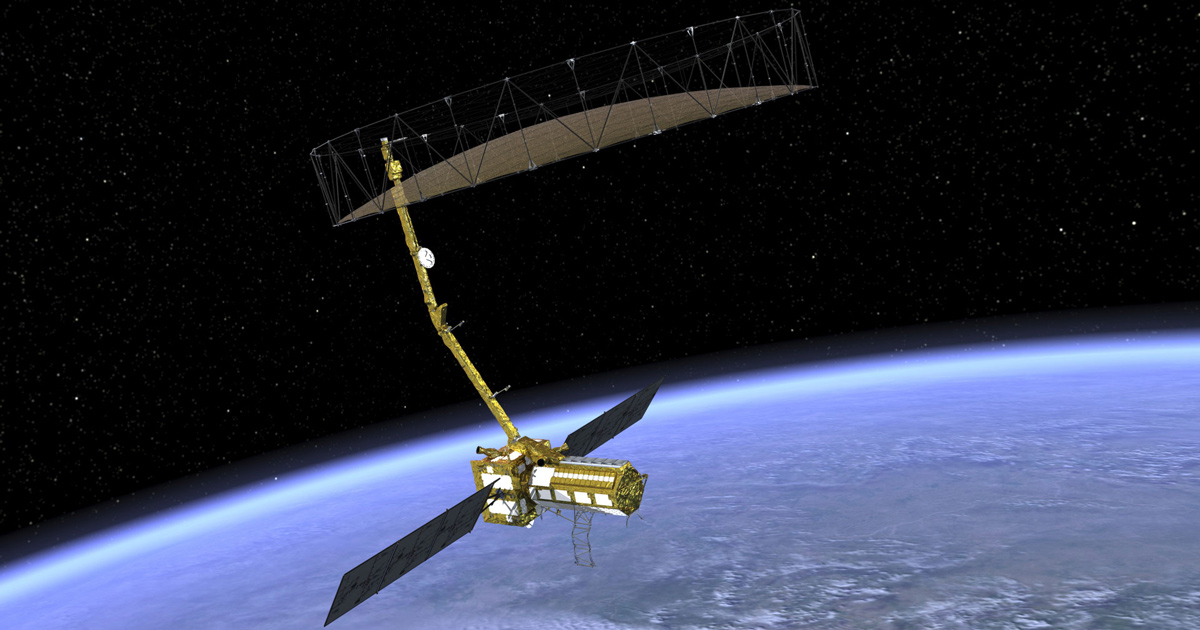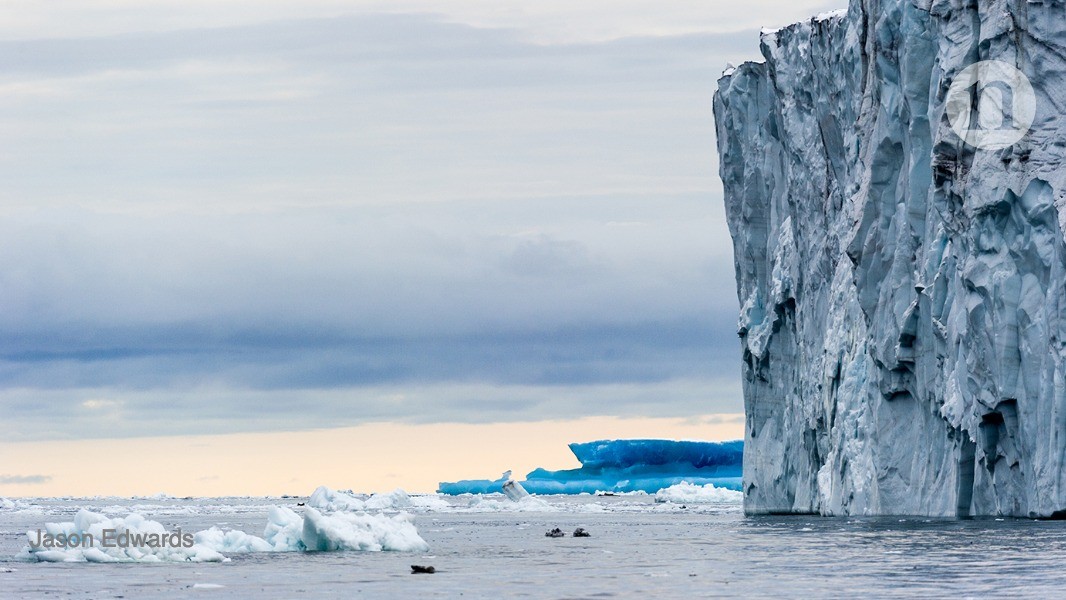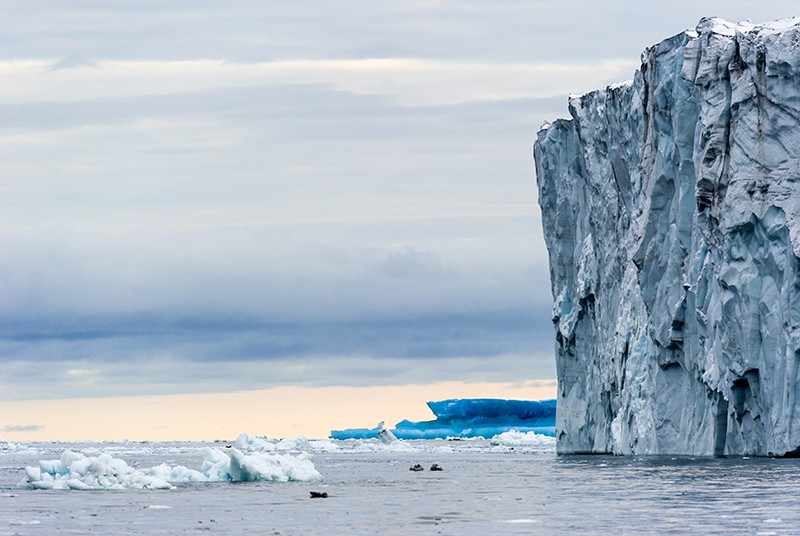Arctic scientists iced out by US–India radar mission
Managers’ decision to focus their satellite on the Antarctic has upset some researchers who study ice around the northern pole.
Antarctica's vast ice sheet and surrounding sea ice will be monitored by a joint US-India satellite mission called NISAR.Credit: Jason Edwards
Earth scientists in the United States have waited decades for NASA to launch a radar satellite to study natural hazards and changing ecosystems. But the design of a joint US–India radar mission planned for 2022 has divided researchers who study polar ice.
Mission managers at NASA and the Indian Space Research Organisation (ISRO) decided recently that the spacecraft, known as NISAR, will focus on the Antarctic at the Arctic’s expense. That will essentially blind the mission to everything that lies above 77.5º N latitude, including most of the Arctic’s rapidly shrinking sea ice — a decision that some researchers see as short-sighted. Several US polar scientists contacted by
Nature declined to speak publicly about their concerns, worried about how NASA might react.
NASA and ISRO say they decided to focus on Antarctica in part because
Europe’s Sentinel-1 satellites already provide the same type of data, known as synthetic aperture radar (SAR), for the Arctic. The rationale is unusual for NASA, which rarely cites another satellite programme’s work as a reason not to gather its own observations.
“They’ve made some tough choices,” says Mark Drinkwater, head of the European Space Agency’s Earth and mission science division in Noordwijk, the Netherlands.
For scientists who study the cryosphere, SAR is important because it can see changes through the long, dark polar night, when ice is growing and deforming but is not visible to regular satellites, says Sinead Farrell, a sea-ice scientist at the University of Maryland in College Park.
Next month, NASA will begin using a specially equipped aeroplane to gather SAR data in the southeastern United States. The NISAR team will use the observations to fine-tune its data-processing algorithms.
Bouncing back
NISAR will map the planet by measuring how radar signals bounce off Earth’s surface. Radar reflections from directly beneath the spacecraft can be hard to interpret, so NISAR’s two radar instruments will instead look off to one side.
If the radar instruments point to the right, they can see the Arctic; if they point to the left, they can see the Antarctic. They cannot do both. “That’s the issue: we have to either look at the north or look at the south,” says Paul Rosen, the NISAR project scientist at NASA’s Jet Propulsion Laboratory in Pasadena, California.
Most other SAR missions are right-looking, which means that they cover the Arctic at the expense of the Antarctic. But in September, the NISAR science team decided to make its satellite left-looking for its entire primary mission, which is meant to last at least three years. Word of the decision trickled out in venues such as the American Geophysical Union meeting in Washington DC last December.
“NISAR will occupy a unique place in our international spectrum by being the only [SAR] mission that covers the Antarctic continent in its entirety,” says Eric Rignot, a glaciologist at the University of California, Irvine, who is on the mission’s science team. “This is tremendously important for our future,” he argues, given that Antarctica is not mapped as well as the Arctic, and
climate change is transforming Antarctic ice, too.
SAR can track changes in glaciers flowing on and off of land. In 2009, the Canadian Space Agency turned its RADARSAT-2 spacecraft temporarily to the left. The resulting SAR data helped Rignot and his colleagues to produce a detailed map of ice motion in Antarctica
1.
NISAR will be physically able to look either left or right. The mission’s original plan called for the radar instruments to look right — to the Arctic — for about 300 days a year, and left — to the Antarctic — for about 60 days. But changing directions isn’t ideal because it interrupts observations being gathered for other purposes, such as natural hazards or ecosystem studies, says Gerald Bawden, NISAR’s acting programme scientist at NASA in Washington DC.
Northern exposure
Other, non-US SAR satellites do cover the north. Europe’s twin Sentinel-1 satellites provide nearly complete SAR coverage of the Arctic every three days. Their data are openly available, and even archived on NASA’s servers. The European Commission has committed to flying a series of Sentinel probes until 2030, which is the major reason NISAR scientists decided that they could abandon studying the Arctic. “This will be one of the first times NASA has considered the programme of record of other agencies,” says Bawden.
But relying on other satellites for Arctic SAR coverage could be risky. The United States does not have a say in how Sentinel data are acquired, such as which areas the European satellites might temporarily focus on after an Arctic oil spill. The Canadian Space Agency plans to launch a series of three SAR satellites, the RADARSAT Constellation Mission, no earlier than March. They will focus on the Arctic and their data will be publicly available, but US scientists will not have a say in how the trio operates.
NASA can also buy data from commercial SAR missions that focus on the Arctic, such as the twin small satellites launched last year by ICEYE of Espoo, Finland, but commercial data can be expensive.
Amid all these Arctic data, Drinkwater says, focusing NISAR on the Antarctic is a good decision. “We’ll have an observing system capacity that can do both ends of the Earth in a routine monitoring fashion,” he says. “We’ve never had that.”

 nisar.jpl.nasa.gov
nisar.jpl.nasa.gov








